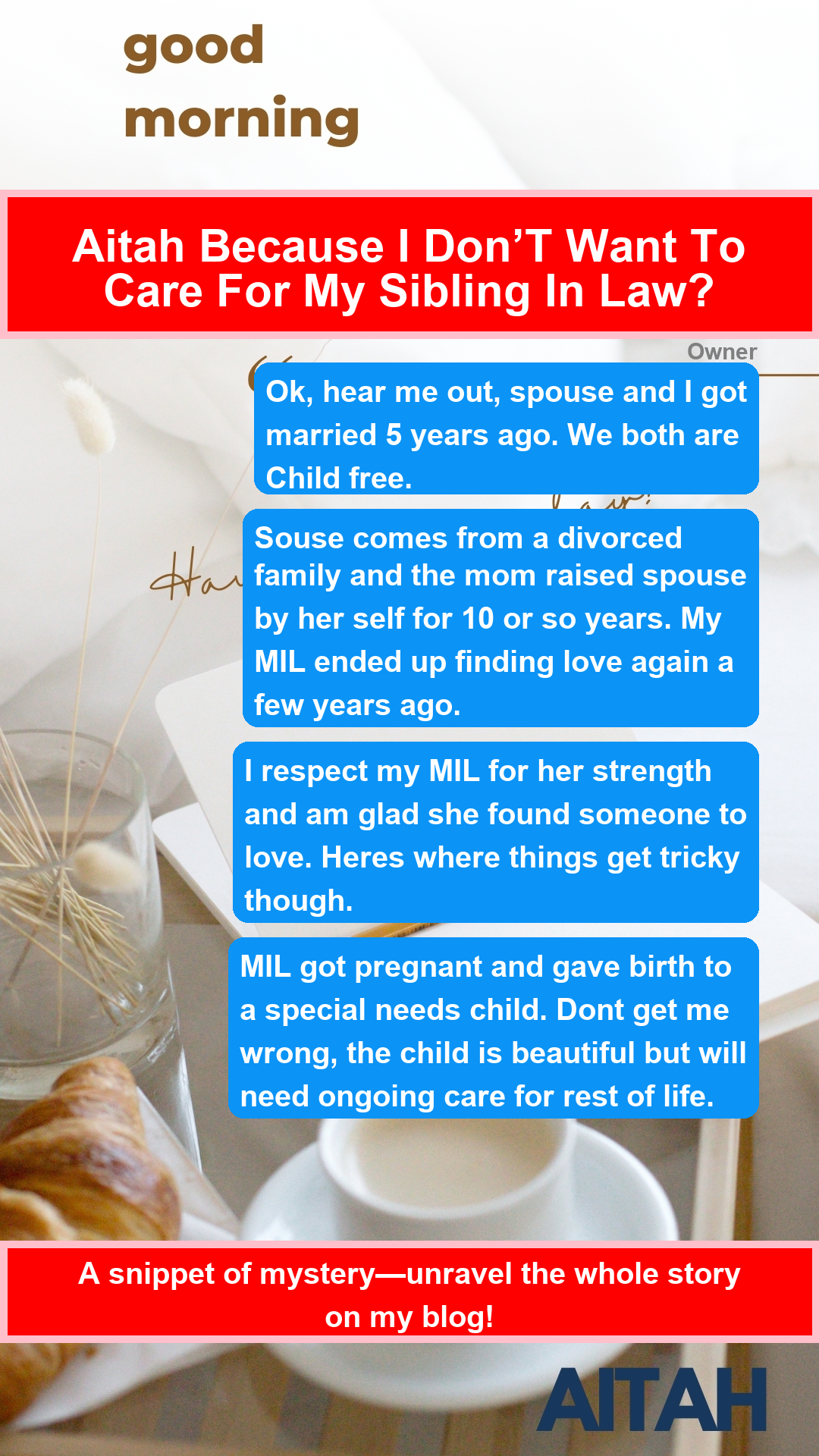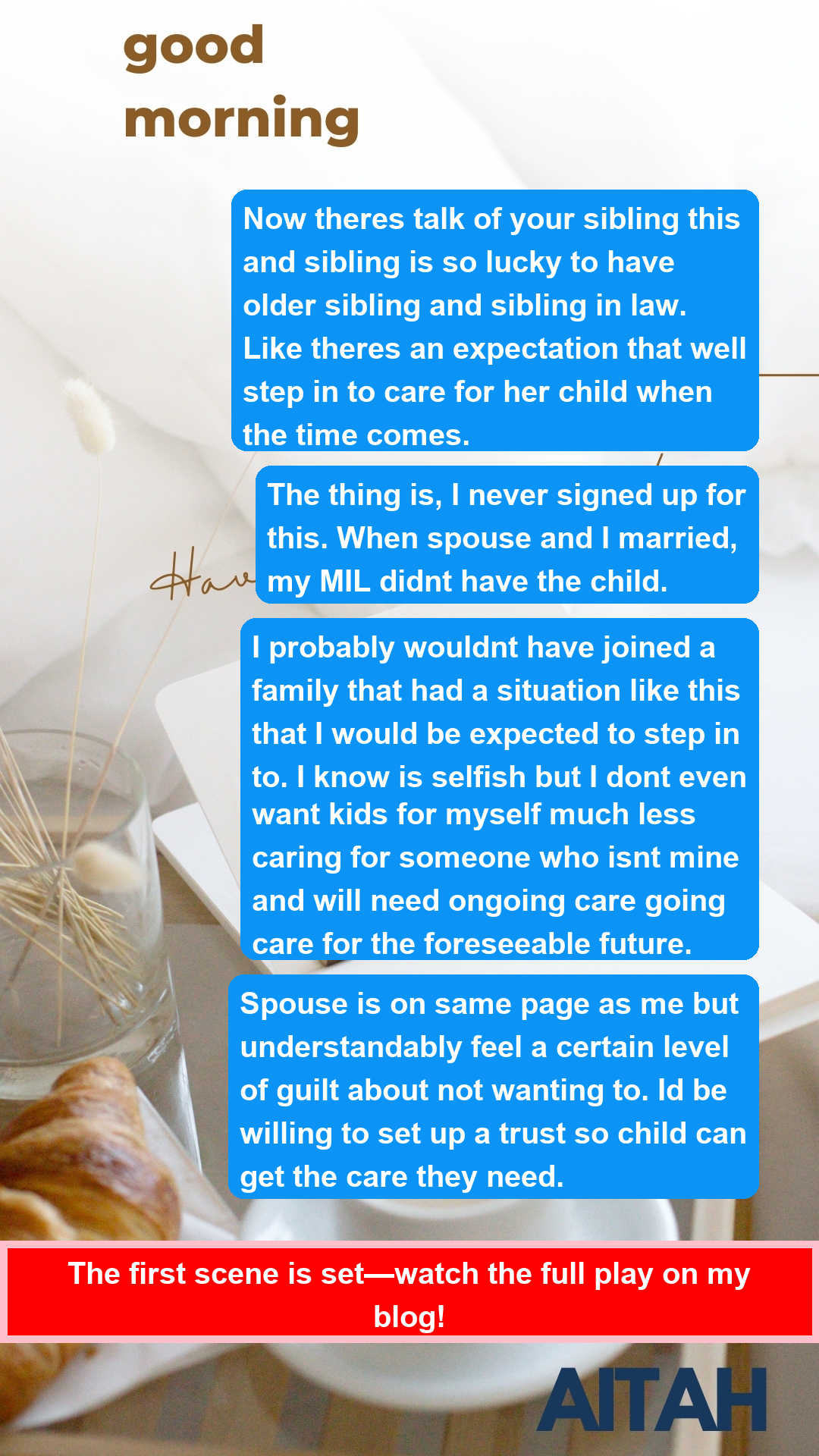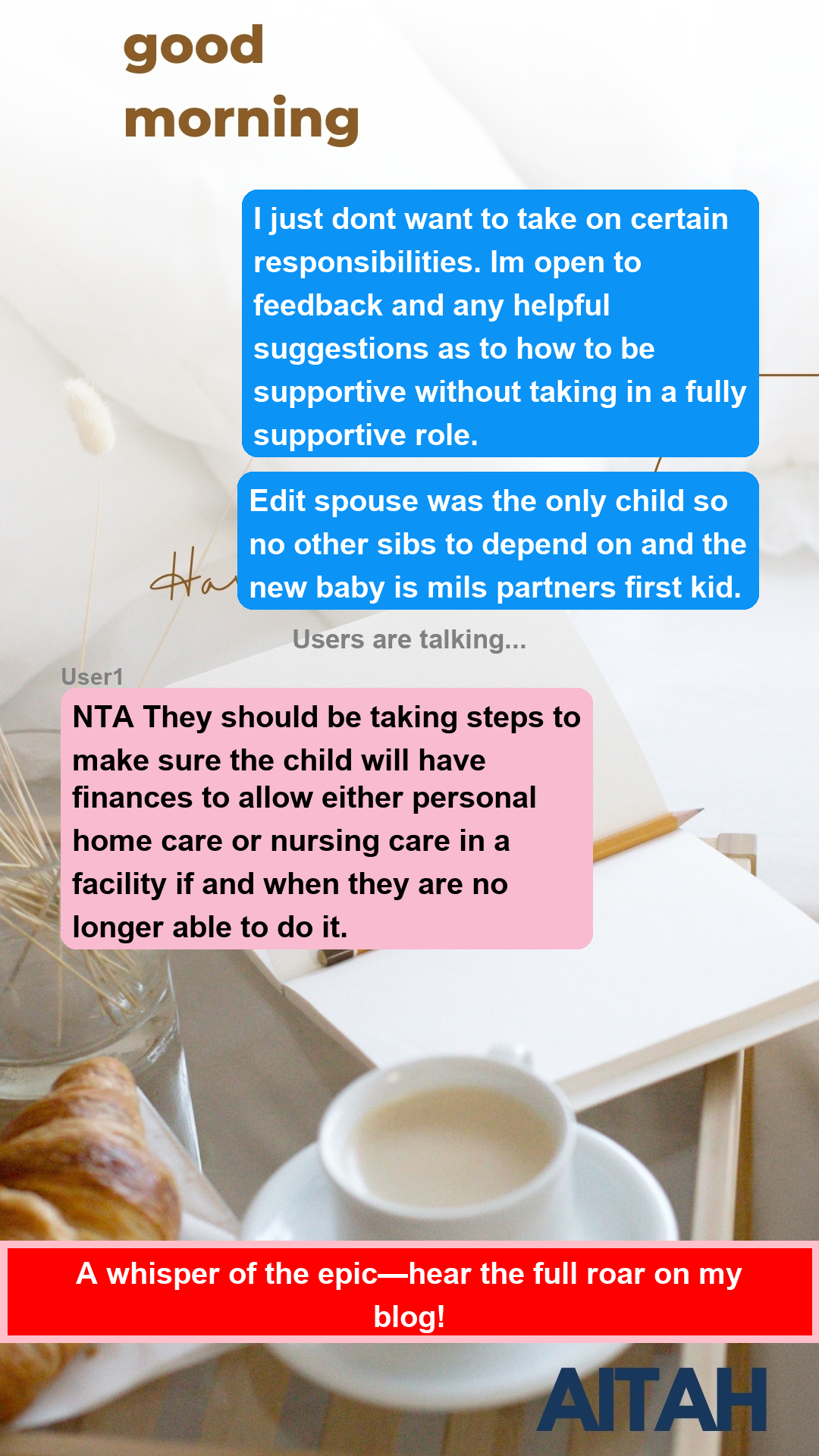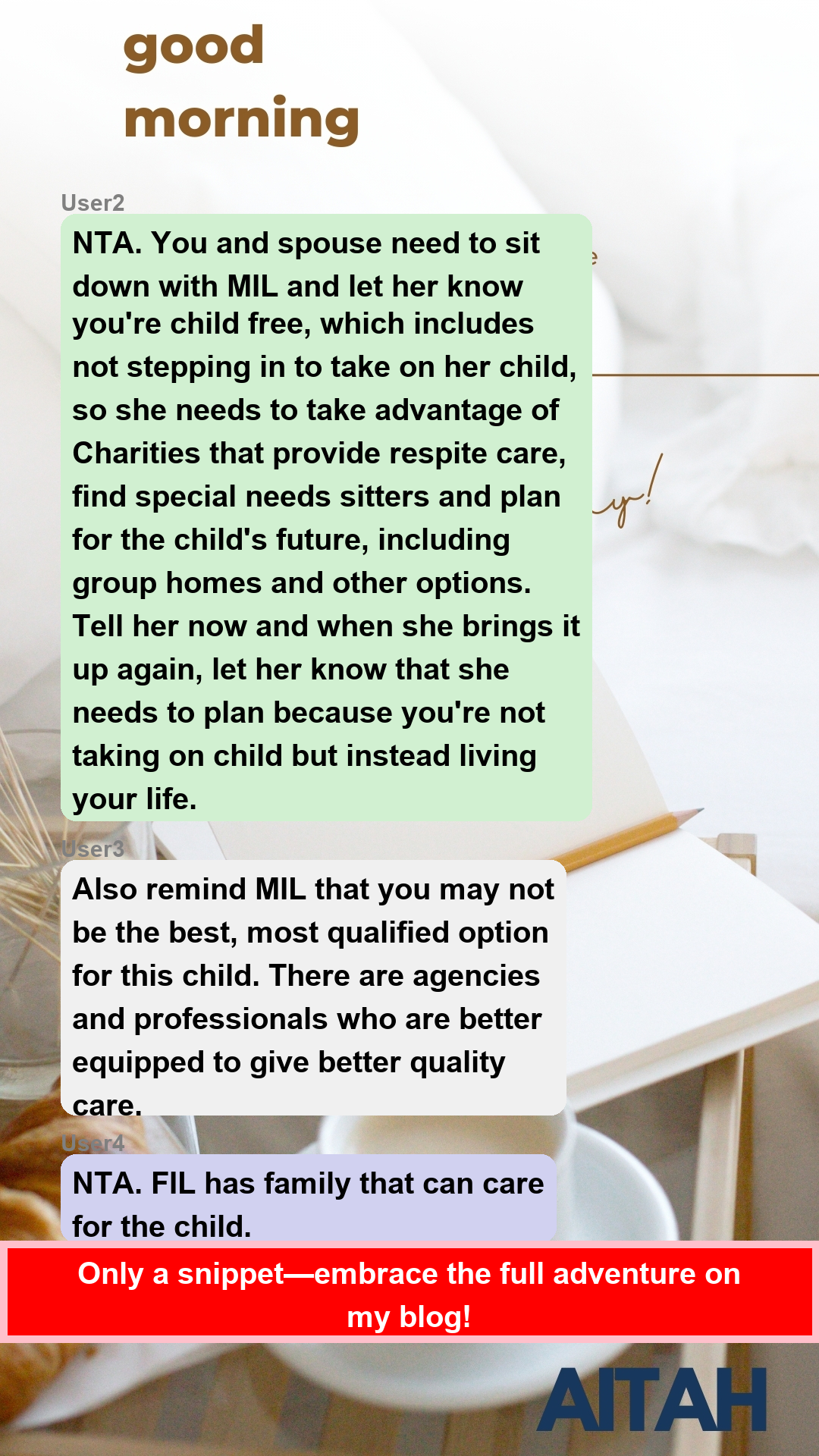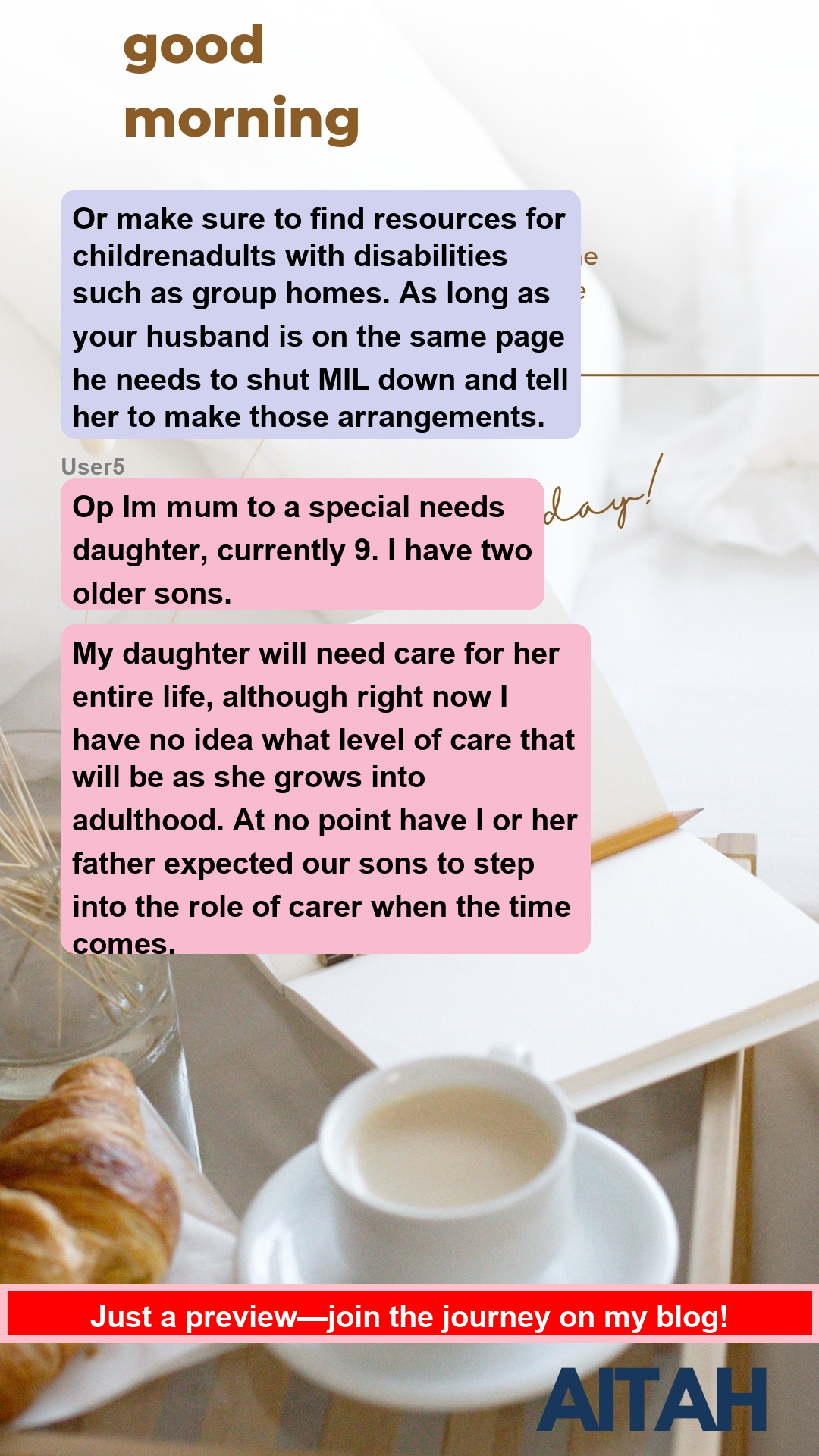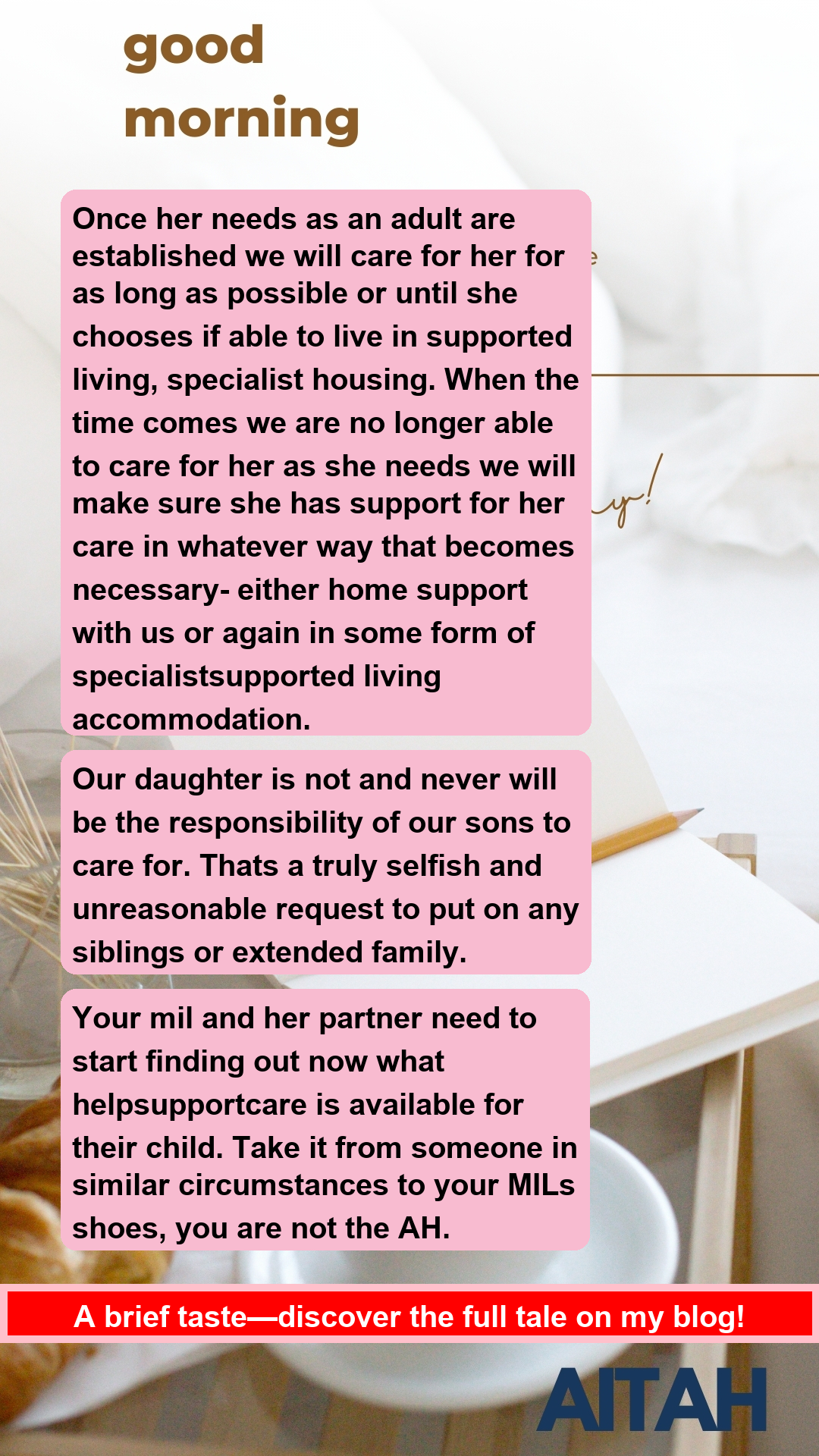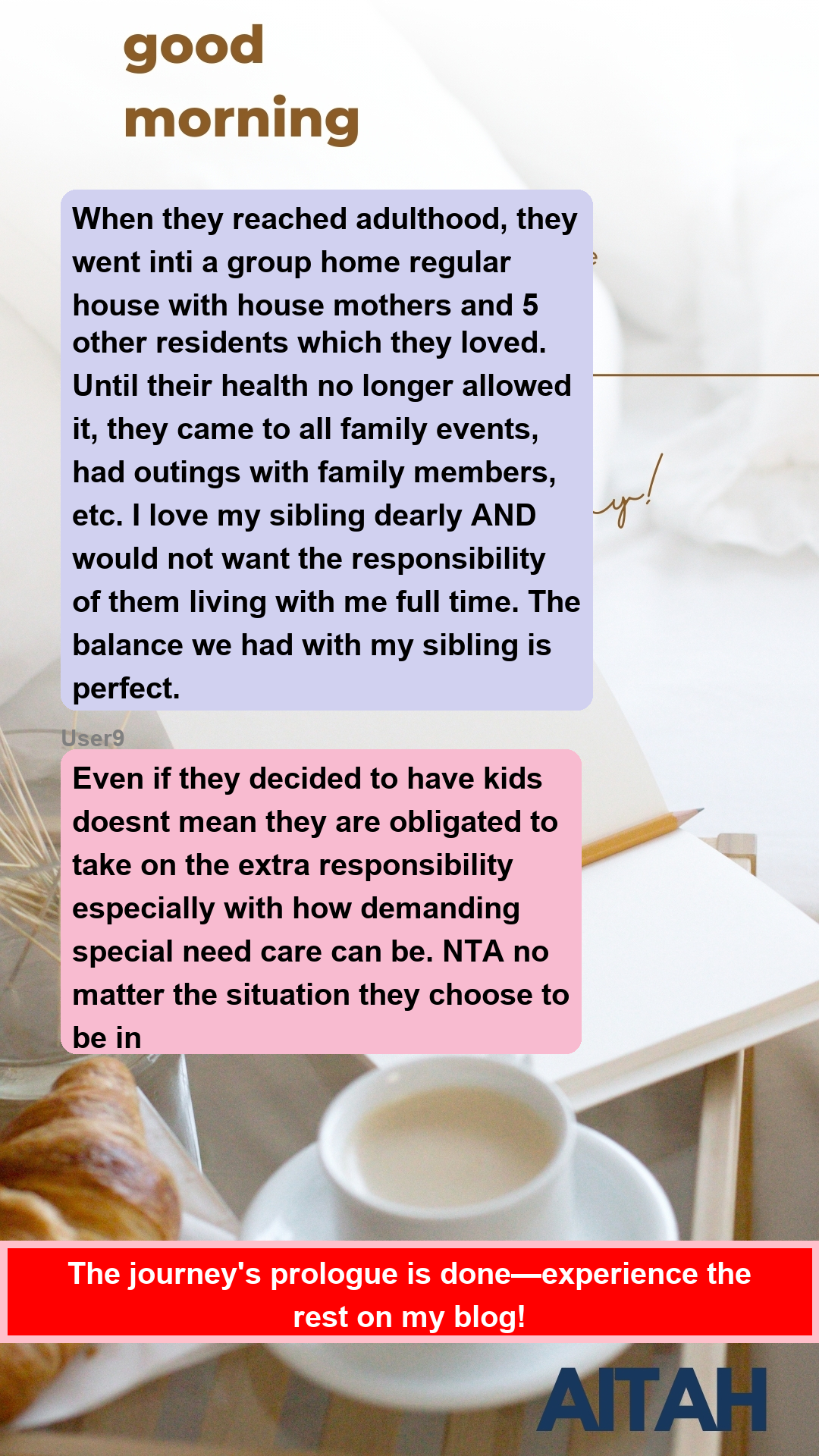AITAH because I don’t want to care for my Sibling in law?
 Image credit: Pixabay (This is example image – Not the actual photo)
Image credit: Pixabay (This is example image – Not the actual photo)
When Family Expectations Clash with Personal Choices
In a heartfelt dilemma, a child-free couple grapples with unexpected family responsibilities after the mother-in-law gives birth to a special needs child. Despite their commitment to a life without children, they face mounting pressure from relatives who assume they will step in as caregivers. This story raises thought-provoking questions about personal boundaries, societal expectations, and the complexities of family dynamics. It’s a relatable scenario for many in the U.S. who navigate the balance between familial duty and personal choice.
Family Drama Surrounding Child Care Expectations
A couple, married for five years, is navigating a complex family dynamic involving their child-free lifestyle and the recent addition of a special needs child to the family. Here’s a breakdown of the situation:
- Background: The couple is child-free by choice. The spouse comes from a divorced family and was raised by their mother for about ten years.
- New Addition: The mother-in-law (MIL) found love again and recently gave birth to a special needs child. While the couple respects the MIL for her resilience, this new development has created tension.
- Expectations: There is growing pressure from family members suggesting that the couple should step in to help care for the new child, who will require ongoing support throughout their life.
- Personal Feelings: The couple feels conflicted. They never anticipated taking on such responsibilities when they married, especially since they had made a conscious decision to remain child-free.
- Spouse’s Guilt: Although both partners are aligned in their feelings about not wanting to take on caregiving duties, the spouse experiences guilt due to being the only child and the new baby being the MIL’s partner’s first child.
- Proposed Solutions: The couple is open to finding ways to support the child without becoming primary caregivers. They are considering setting up a trust to ensure the child receives the necessary care without directly taking on the responsibility themselves.
The couple is seeking advice on how to navigate this family drama and find a conflict resolution that respects their boundaries while still being supportive of their MIL and the new child. They are looking for suggestions on how to maintain their child-free lifestyle while addressing the expectations placed upon them by family members.
In summary, the couple is facing wedding tension due to unexpected family dynamics and the responsibilities that come with a new family member. They are committed to finding a balance that honors their choices while also considering the needs of their extended family.
This is Original story from Reddit
 Image credit: Pixabay (This is example image – Not the actual photo)
Image credit: Pixabay (This is example image – Not the actual photo)
Story
Ok, hear me out, my spouse and I got married 5 years ago. We both are child-free. Spouse comes from a divorced family, and the mom raised spouse by herself for 10 or so years.
My MIL ended up finding love again a few years ago. I respect my MIL for her strength and am glad she found someone to love. Here’s where things get tricky, though.
MIL got pregnant and gave birth to a special needs child. Don’t get me wrong, the child is beautiful but will need ongoing care for the rest of their life. Now there’s talk of “your sibling this” and “sibling is so lucky to have an older sibling and sibling-in-law.”
Like there’s an expectation that we’ll step in to care for her child when the time comes. The thing is, I never signed up for this. When my spouse and I married, my MIL didn’t have the child.
I probably wouldn’t have joined a family that had a situation like this that I would be expected to step into. I know it is selfish, but I don’t even want kids for myself, much less caring for someone who isn’t mine and will need ongoing care for the foreseeable future. Spouse is on the same page as me but understandably feels a certain level of guilt about not wanting to.
I’d be willing to set up a trust so the child can get the care they need. I just don’t want to take on certain responsibilities. I’m open to feedback and any helpful suggestions as to how to be supportive without taking on a fully supportive role.
Edit: Spouse was the only child, so there are no other siblings to depend on, and the new baby is MIL’s partner’s first kid.
View the Original Reddit Post Here
Summary of Reddit Comments
The top Reddit comments indicate a strong consensus that the original poster (OP) is not at fault (NTA) for refusing to take on the responsibility of caring for their mother-in-law’s special needs child. Many users emphasize the importance of setting clear boundaries and suggest that the mother-in-law should seek alternative care options, such as charities or group homes, rather than relying on OP and their spouse. The overarching sentiment is that expecting family members to take on such a significant responsibility is unreasonable and selfish.
Verdict: NTA
Expert Advice for Resolving Family Conflict
Navigating family dynamics, especially when it involves caregiving responsibilities, can be challenging. Here are some practical steps for the couple to consider as they address the expectations placed upon them while maintaining their child-free lifestyle:
Steps for the Couple
- Open Communication:
Initiate a calm and honest conversation with the mother-in-law. Express your feelings about the situation, emphasizing your commitment to your child-free lifestyle while also acknowledging her challenges. This can help set the stage for mutual understanding.
- Set Clear Boundaries:
Clearly articulate what you are and are not willing to do regarding caregiving. It’s important to be firm yet compassionate in your stance to avoid any misunderstandings in the future.
- Explore Alternative Support Options:
Research and suggest alternative care solutions for the special needs child. This could include local charities, support groups, or professional caregiving services that can provide the necessary assistance without placing the burden on you.
- Consider Financial Support:
If feasible, discuss the idea of setting up a trust or contributing to a fund that can help cover the costs of care for the child. This shows your willingness to support the child’s well-being without taking on direct caregiving responsibilities.
- Involve Other Family Members:
Encourage a family meeting to discuss the situation collectively. This can help distribute the responsibility and ensure that everyone understands the expectations and limitations of each family member.
- Seek Professional Guidance:
If the situation becomes too overwhelming, consider consulting a family therapist. A neutral third party can facilitate discussions and help mediate any conflicts that arise.
Steps for the Mother-in-Law
- Accepting Support:
Encourage the mother-in-law to seek support from friends, community resources, or professional caregivers. It’s important for her to understand that she doesn’t have to shoulder this responsibility alone.
- Understanding Boundaries:
She should recognize and respect the couple’s decision to remain child-free. Open dialogue about her needs and the couple’s limitations can foster a healthier relationship.
- Exploring Resources:
Research local organizations that specialize in support for families with special needs children. This can provide her with valuable resources and connections.
By taking these steps, both the couple and the mother-in-law can work towards a resolution that respects everyone’s boundaries while ensuring the special needs child receives the care and support they require. Remember, it’s essential to approach this situation with empathy and understanding, recognizing that everyone involved is navigating their own challenges.
Join the Discussion
 Image credit: Pixabay (This is example image – Not the actual photo)
Image credit: Pixabay (This is example image – Not the actual photo)
What do you think? Would you have handled this differently?
Share your thoughts below! Vote: Do you agree with Reddit’s verdict?
